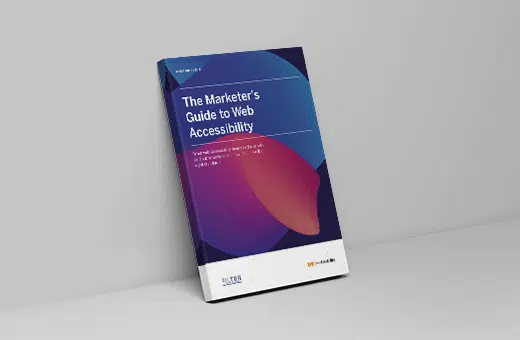
What are the Web Content Accessibility Guidelines and why are they important when it comes to web accessibility?

The Web Content Accessibility Guidelines are part of a series of web accessibility guidelines published by the Web Accessibility Initiative of the World Wide Web Consortium.
In 2008, version 2.0 of the guidelines were published, and this was the de facto standard until updated in 2018 with the introduction of WCAG 2.1.
The guidelines contain four principles: perceivable, operable, understandable, and robust. For each of the areas, there are testable success criteria. The success criteria are set at three levels: A, AA, and AAA. The success criteria are what determines “conformance” to WCAG.
But how we develop websites and mobile applications is constantly changing as new technologies make their way into the market and we improve and iterate upon user interaction.

We worked closely with our partners at Web Usability to put together an extensive guide. Aiming to help modern-day marketers adhere to accessibility guidelines and standards.
The Accessibility Guidelines Working Group is therefore working on a substantial change to restructure web accessibility guidance to culminate in version 3. However, as this is a multi-year effort, an interim measure is needed to provide updated web accessibility guidance to reflect changes on the web since the publication of WCAG 2.1.
The new, incremental version of the guidelines – WCAG 2.2 – is scheduled to be completed and published in May 2023.
WCAG 2.2 extends WCAG 2.1 by adding new success criteria, definitions to support them, and guidelines to organise the additions. This includes changes in areas such as:
The good news is that WCAG 2.2 builds on and is backwards compatible with WCAG 2.1, which means there is no need to undergo a fundamental change in how businesses and organisations implement accessibility on their websites.
But it is important to recognise that this interim standard adds new guidance and to ensure that you are meeting the new requirements, it is recommended that you conduct an audit against these changes to check whether you might need to make updates or changes to your website or app.
We’ve previously written about what an accessibility audit consists of and how to implement them here, and also about the benefits of testing tools, both automated and manual, which you can find here.

We’ve previously written about what an accessibility audit consists of and how to implement them here, and also about the benefits of testing tools, both automated and manual.
If you have questions about how to run an accessibility audit, we’re more than happy to have a chat or a call with you about it.
Feel free to drop us a note using hello@filteragency.com or fill in our contact form and get in touch.